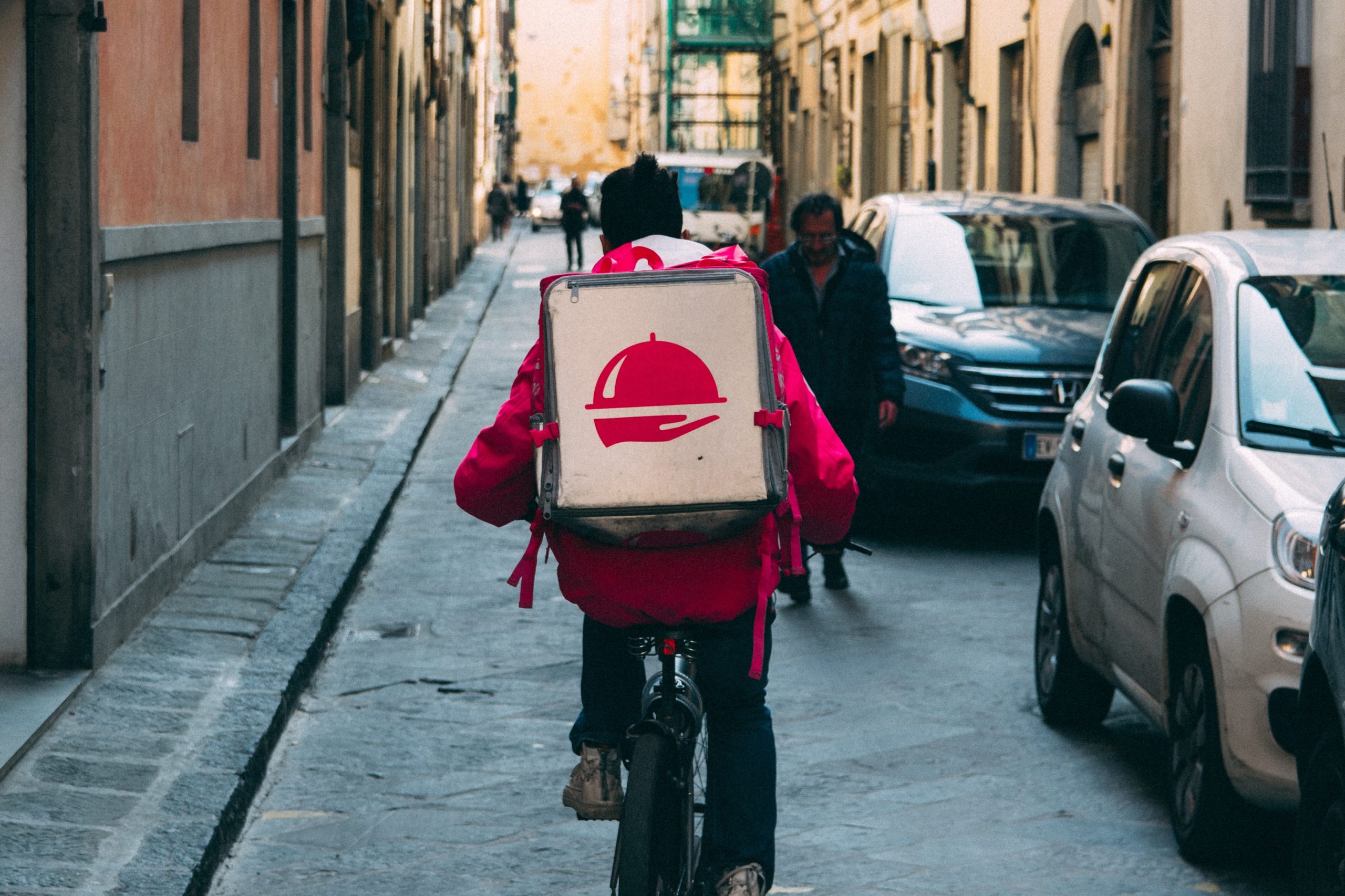6/1/2020
Despite everything, life goes on: we sleep, we wake up, we check our phones while trying not to think too hard about how large the number 100,000 is, and we eat breakfast (or lunch, depending on how crazy your quarantine sleep schedule is). But where are we getting the food for that breakfast? In the midst of a pandemic, unless you’re exclusively growing your own food, any way you get it has associated risks and ethical considerations.
Your options are these: go to the grocery store and risk getting exposed to/exposing other shoppers and employees; pick up takeout from a restaurant, again with the risk of contact with others; or get delivery, possibly through a third-party delivery app like Postmates or Instacart. No matter which one you pick, you’re putting someone in danger. The question of delivery or not is one that’s especially fraught — is it morally right for you to put someone else at risk of becoming infected instead of taking on the risk by going to the grocery store yourself? As Karen Stohr, a professor of moral philosophy at Georgetown, says, people who can afford to stay at home during the pandemic need to think about “whether [they] are bearing [their] fair share of the collective risk or whether [their] comfort is coming at too high a price to others.”
Okay, so no delivery, then. But now we have to consider the effects of that decision: you going to the grocery store instead means that you could well be exposing others, as many people carry the virus without showing symptoms. Also, delivery app workers need the business to survive. One Seattle delivery person for Caviar, an app that delivers from high-end restaurants, laid out her situation: “I can’t self-quarantine because not working is not an option. If I don’t make enough money, I can’t feed my children for the next six weeks.” She added that she believed that was the attitude most “gig workers” would have, since none of them are paid enough to have savings to fall back on during an emergency like this pandemic.
Workers like these are stuck, forced to continue to work despite the risk in order to survive. And if they contract COVID-19, the decision is even more complicated: those without paid sick leave, which many of them aren’t afforded since delivery companies hire them as “independent contractors” and therefore aren’t obligated to provide it, must choose between knowingly exposing the people they deliver to or relinquishing what might be their only source of income.
So what’s the right call here? If you can find a delivery company or grocery store that gives their employees paid sick leave, that’s the best case as it’s safer for both you and the employees (for example, Whole Foods, Trader Joe’s, Kroger, Stop & Shop, and Target are all providing two paid weeks of sick leave to any employees who contract COVID-19). And when it comes to delivery or curbside pickup from grocery stores, which involve less risk for the buyer and grocery employees, slots may be limited, so it makes sense to leave them for people at higher risk (including the elderly and those with underlying conditions). Also, contactless delivery (where the employee leaves the food at your door without interacting with you) is a good way of getting food, as long as you properly dispose of the outer containers that could carry the virus.
Simple enough for healthy people staying at home. But again, for delivery people or grocery store employees, it’s harder: risk infection and infecting others for income, or stay safe without pay? With jobs evaporating by the tens of millions, any kind of employment may be hard to give up, no matter the cost.

